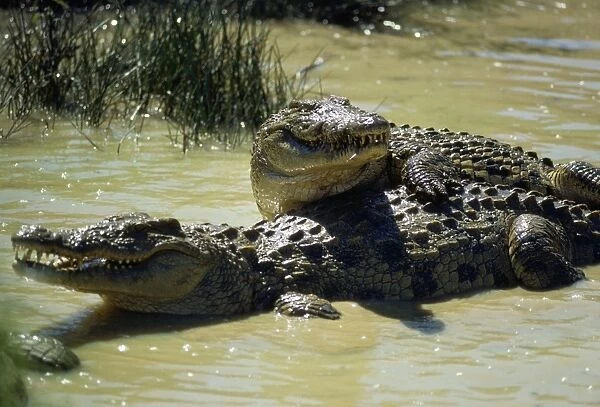Nile Crocodile Breeding Grounds
Nile Crocodile Breeding Grounds The Nile crocodile (Crocodylus niloticus) is one of Africa’s most iconic reptiles, known for its size, predatory behavior, and adaptability across various aquatic environments. Found in many African countries, these crocodiles are integral to freshwater ecosystems, where they serve as apex predators, maintaining a delicate balance within their habitats. The survival of this species is heavily dependent on the availability and security of suitable breeding grounds. This article explores the critical habitats, breeding behaviors, threats, and conservation strategies for protecting Nile crocodile breeding sites across the continent.
Characteristics of Nile Crocodile Breeding Grounds
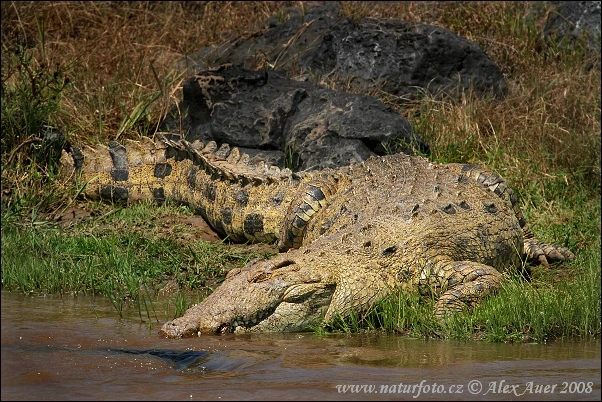
The breeding grounds of Nile crocodiles are specialized environments that provide the necessary conditions for mating, nesting, and nurturing of young crocodiles. These sites are typically found along rivers, lakes, marshes, and estuaries throughout sub-Saharan Africa. Nile crocodiles prefer slow-moving or stagnant water bodies where they can easily regulate their body temperature, hunt prey, and find secure nesting spots.
Preferred Habitat and Environment
Nile crocodiles choose breeding sites based on several environmental factors. They prefer areas with sufficient water depth, basking sites, and an abundance of prey. Suitable habitats include riverbanks with sandy or muddy shores, where nests can be dug with ease. Additionally, vegetation cover near the water’s edge provides females with concealment from predators and potential human disturbances.
Nesting Sites
The nesting sites are selected based on soil type, elevation, and proximity to water. Female crocodiles dig their nests in sandy or loamy soil, often on raised riverbanks or isolated islands, to reduce the risk of flooding. These nests are typically 30–50 cm deep, providing a secure chamber for the eggs. Factors such as water level fluctuations, temperature, and vegetation density influence the choice of nesting locations.
Breeding Behavior and Reproduction
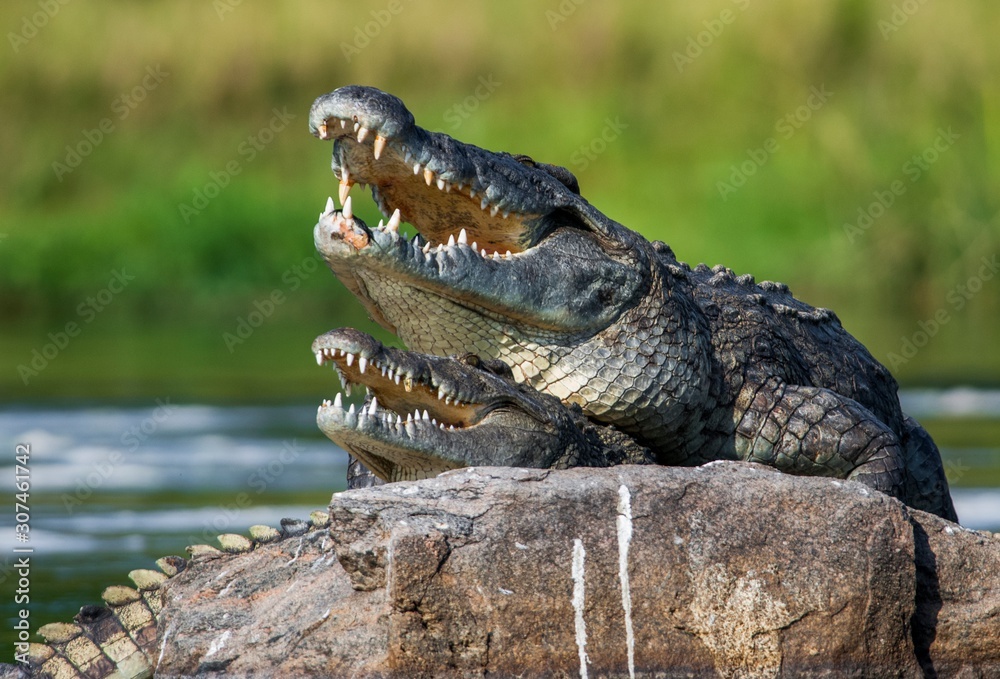
Understanding the breeding behavior of Nile crocodiles is crucial for identifying and protecting their breeding grounds. The reproductive cycle of these reptiles follows a series of well-defined stages, from courtship and mating to nesting and parental care.
Courtship and Mating Rituals
Nile crocodiles typically engage in courtship and mating during the dry season when water levels are low, and the environment is more predictable. The males perform a variety of displays, including vocalizations, body vibrations, and water slapping to attract females. Once a female shows interest, the pair will engage in a series of synchronized swimming and physical contact to establish a bond.
Nest Construction and Egg Laying

After mating, the female searches for a suitable nesting site, usually located close to water for easy access. She digs a hole in the selected location and lays between 25 to 80 eggs, depending on her size and age. The eggs are then covered with soil, and the nest is camouflaged to prevent detection by predators such as monitor lizards, hyenas, and other crocodiles.
Parental Care
Although Nile crocodiles are solitary animals for most of their lives, females display considerable parental care during the nesting and hatching phases. The mother guards the nest vigilantly, fending off potential threats. When the eggs are ready to hatch after an incubation period of 80 to 90 days, the mother helps the hatchlings emerge from the nest and carries them to the water in her mouth, ensuring their safety during this vulnerable stage.
Geographical Distribution of Breeding Grounds
Nile crocodiles have a wide distribution across Africa, with breeding grounds found in diverse ecosystems, from the Nile River Basin to remote wetland areas in Central and Southern Africa. Major breeding sites include:
Nile River Basin (Egypt, Sudan)
Historically, the Nile River provided extensive breeding grounds for these crocodiles, although their populations have dwindled in northern regions due to habitat loss and human encroachment. The Southern Nile regions still harbor viable breeding populations, particularly in protected areas like the Sudd wetlands of South Sudan.
East African Lakes (Lake Victoria, Lake Tanganyika)
These large lakes provide critical habitats for Nile crocodiles. Lake Victoria, in particular, is home to substantial crocodile populations. The numerous islands and secluded inlets within the lake offer ideal breeding and nesting sites.
Okavango Delta and Congo Basin
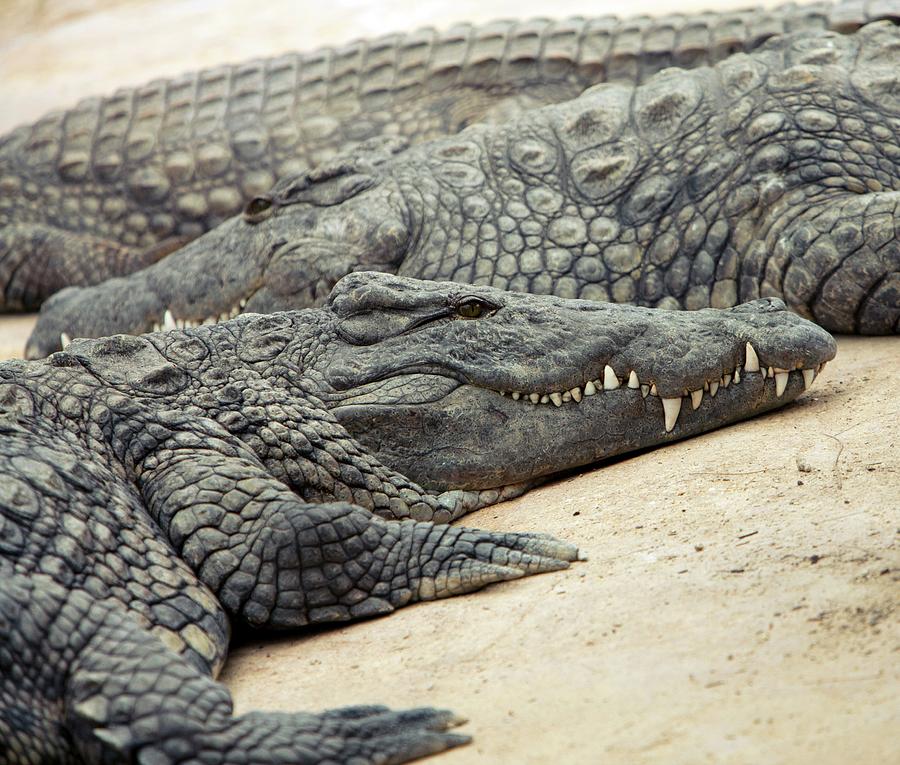
The Okavango Delta in Botswana is a prime breeding area, with its seasonal floods creating isolated islands and channels perfect for nesting. The dense riverine forests and marshlands of the Congo Basin also serve as significant breeding grounds, though these areas remain under-researched.
South African River
In South Africa, rivers such as the Limpopo and Olifants support healthy breeding populations. Conservation areas like the Kruger National Park have established monitoring programs to protect these breeding sites.
Threats to Nile Crocodile Breeding Grounds
Despite their adaptability, Nile crocodiles face numerous threats that compromise the security and availability of their breeding grounds.
Habitat Loss and Degradation
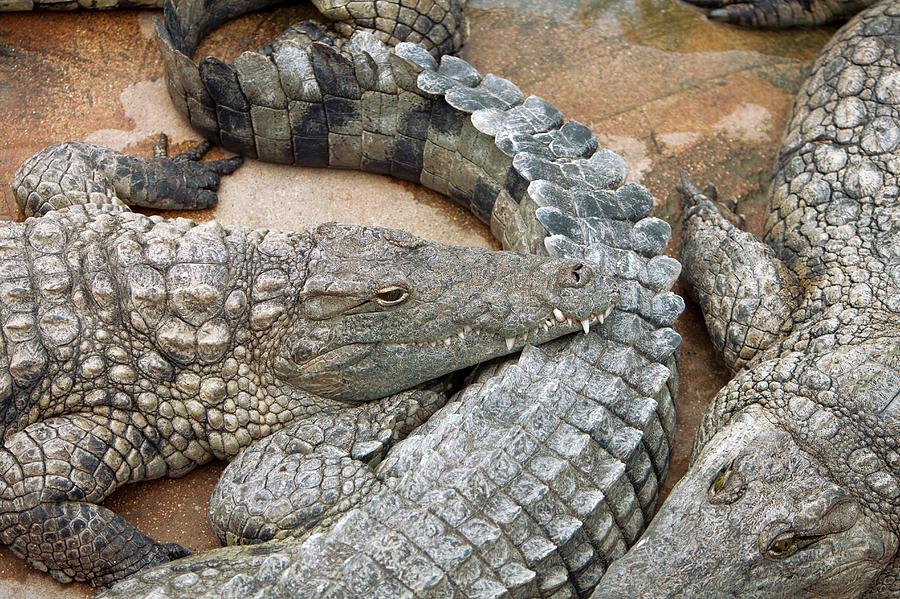
Human activities such as agriculture, urbanization, and dam construction have led to the loss and fragmentation of key breeding habitats. The construction of dams alters water levels, often submerging or drying out nesting areas, making them unsuitable for egg incubation.
Climate Change Effect
Climate change poses a significant threat to Nile crocodile breeding sites. Rising temperatures can affect sex determination in embryos, as Nile crocodiles have temperature-dependent sex determination (TSD). Furthermore, changes in rainfall patterns and prolonged droughts can reduce suitable nesting sites and decrease food availability for hatchlings
Human-Crocodile Conflict
Nile crocodiles often come into conflict with humans, especially in regions where agricultural expansion and fishing activities overlap with crocodile habitats. This conflict can lead to retaliatory killings and poaching, reducing the number of mature breeding individuals and destabilizing local populations.
Conservation Efforts and Management Strategies
Conservation of Nile crocodile breeding grounds is vital for ensuring the long-term survival of the species. Several conservation strategies have been implemented to protect these critical habitats:
Protected Areas and Wildlife Reserves
Many of the most critical Nile crocodile breeding sites are located within national parks and protected areas. Reserves such as the Chobe National Park in Botswana and the Murchison Falls National Park in Uganda have implemented specific measures to safeguard nesting sites and reduce human interference.
Community-Based Conservation
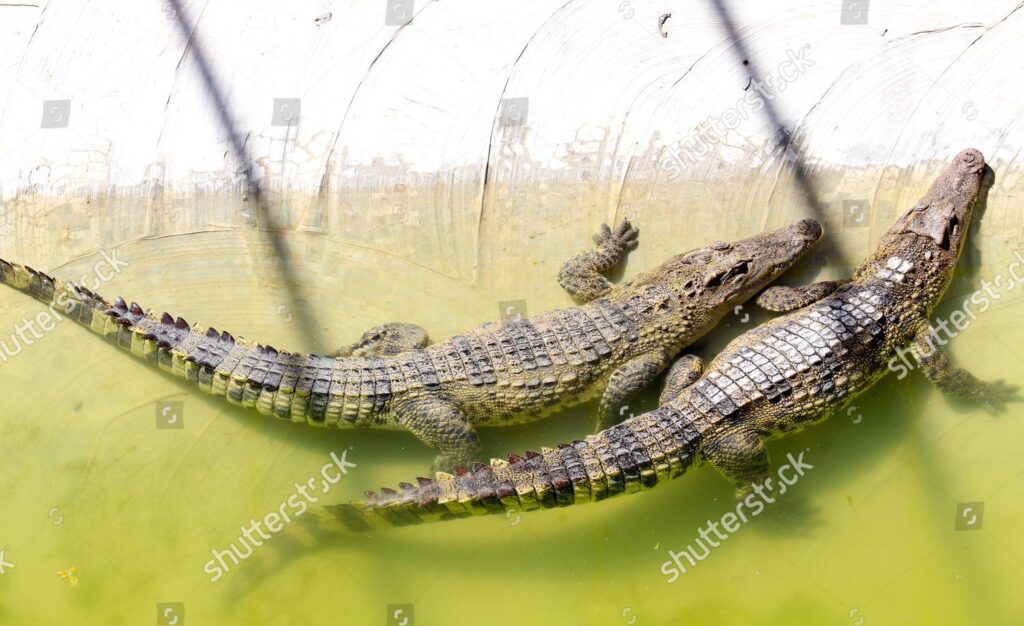
Involving local communities in crocodile conservation has proven effective in regions such as Zambia’s Bangweulu Swamps, where community-run conservation projects have helped reduce poaching and enhance local awareness of the species’ ecological importance.
Research and Monitoring Programs
Long-term research and monitoring programs are essential for understanding Nile crocodile breeding patterns, habitat use, and population dynamics. Advances in technology, such as GPS tracking and drone surveillance, allow researchers to monitor breeding sites and assess the impact of environmental changes on these habitats.
Conclusion
Nile crocodile breeding grounds are critical for the survival of this species, providing secure environments for mating, nesting, and hatching. However, these habitats face increasing threats from human activities and environmental changes. Conservation efforts must focus on protecting existing breeding grounds, mitigating human-crocodile conflicts, and promoting community involvement in conservation initiatives. By safeguarding these vital breeding habitats, we can ensure that Nile crocodiles continue to thrive in Africa’s rivers, lakes, and wetlands for generations to come.
FAQs Nile Crocodile Breeding Grounds
Why are breeding grounds important for the survival of Nile crocodiles?
Breeding grounds are essential for Nile crocodiles as they provide safe locations for mating, nesting, and raising young. The quality and security of these habitats influence reproductive success and the survival rates of hatchlings, which are crucial for maintaining healthy population numbers.
How do Nile crocodiles choose their breeding sites?
Nile crocodiles choose breeding sites based on factors such as soil type, temperature, and proximity to water. They prefer areas that are elevated and less prone to flooding, with sandy or loamy soil suitable for nest digging. Vegetation cover and isolation from human activity are also important considerations for nest selection.
What role does temperature play in the development of Nile crocodile eggs?
Temperature is a critical factor for Nile crocodile eggs, as it determines the sex of the hatchlings—a phenomenon known as temperature-dependent sex determination (TSD). Warmer nest temperatures generally produce more females, while cooler temperatures result in more males. Temperature fluctuations during incubation can significantly impact the sex ratio and overall population dynamics.
What are the common threats to Nile crocodile breeding sites?
Nile crocodile breeding sites face threats such as habitat destruction due to agricultural expansion, urbanization, and dam construction. Climate change, which can alter water levels and disrupt nesting habitats, also poses a significant threat. Additionally, human-crocodile conflicts and poaching negatively impact breeding populations.
What conservation strategies are used to protect Nile crocodile breeding grounds?
Conservation strategies for protecting Nile crocodile breeding grounds include establishing protected areas, implementing habitat restoration projects, and promoting community-based conservation initiatives. Research and monitoring programs are also used to track population health and breeding success, ensuring that critical breeding sites are preserved and managed effectively.
